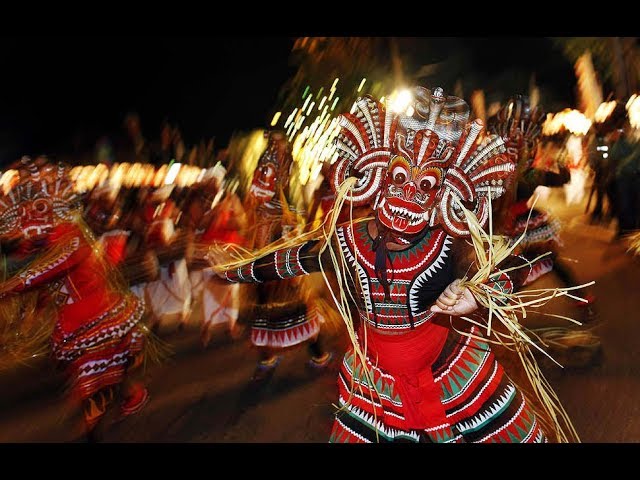The 18 Sanniya (also known as Daha Ata Sanniya) is a traditional healing and exorcism ritual in Sri Lankan folklore and cultural heritage, specifically practiced in the low-country regions. It is an ancient performance involving masks and dances, aimed at curing ailments believed to be caused by various evil spirits or “sanni”. This ritual is a significant part of the country’s traditional dance forms and is deeply connected to Sinhalese healing practices.
Overview of the 18 Sanniya Ritual
- Purpose:
- The ritual is performed to exorcise or drive away evil spirits believed to cause diseases and physical or psychological afflictions in individuals.
- Each of the 18 “sanni” represents a specific ailment or condition, such as fever, vomiting, or insanity, that is believed to be inflicted by supernatural forces.
- The 18 Sanni (Afflictions):
- The “sanni” are personified in the form of masked characters, each with a unique appearance corresponding to the ailment it represents. Some of these include:
- Amukku Sanniya: Associated with throat diseases or choking.
- Golu Sanniya: Represents dumbness or speech impediments.
- Kora Sanniya: Symbolizes paralysis or muscular diseases.
- Kana Sanniya: Related to eye diseases or blindness.
- Pissu Sanniya: Represents insanity or madness.
- Jala Sanniya: Associated with vomiting or diarrhea.
- There are 18 such demons, each believed to be responsible for a different condition.
- The “sanni” are personified in the form of masked characters, each with a unique appearance corresponding to the ailment it represents. Some of these include:
- Performance and Ritual Elements:
- The ritual is led by a Kattadiya or Yakdessa (exorcist) who conducts the ceremony with the aid of dancers, musicians, and sometimes a shaman.
- Traditional drums such as the Yak Beraya and Thammattama are used to create rhythmic patterns that accompany the dance.
- Dancers wear vibrant costumes and intricate masks representing the sanni, making the performance visually dramatic and engaging.
- The ritual is typically performed in an open space, often at night, with offerings and sacred fire as part of the ceremony.
- Symbolism and Healing:
- The dance and drumming are believed to appease the spirits, drawing them out and allowing the healer to “capture” and control them.
- The masks, costumes, and movements all have symbolic meanings, aiming to convey the characteristics and nature of each spirit.
- By reenacting the afflictions and their origins, the dancers aim to drive away the negative forces and restore balance to the affected person.
- Cultural and Spiritual Significance:
- 18 Sanniya is not just a healing practice but also a rich cultural performance that preserves ancient Sri Lankan traditions, dance forms, and folklore.
- It reflects the spiritual beliefs of the Sinhalese people, demonstrating their deep connection to nature, the spiritual realm, and the concept of healing through art and ritual.
Experiencing or learning about the 18 Sanniya provides insight into Sri Lanka’s ancient healing arts, cultural traditions, and the ways in which spirituality and folklore are intertwined in its performing arts.


Comments are closed